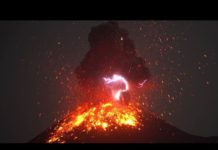The Dead Zone
The Gulf of Mexico hypoxic zone is a seasonal phenomena occurring in the northern Gulf of Mexico, from the mouth of the Mississippi River to beyond the Texas border. It is more commonly referred to as the Gulf of Mexico Dead Zone, because oxygen levels within the zone are too low to support marine life. The Dead Zone was first recorded in the early 1970’s. It originally occurred every two to three years, but now occurs annually. In the summer of 1999 the Dead Zone reached its peak, encompassing 7,728 square miles.
Hypoxic conditions arise when dissolved oxygen levels in the water fall below two milligrams per liter of water, too low to sustain animal life in the bottom strata of the ocean. The Dead Zone forms each spring as the Mississippi and Atchafalaya Rivers empty into the Gulf, bringing nutrient rich waters that form a layer of fresh water above the existing salt water. It lasts until late August or September when it is broken up by hurricanes or tropical storms. The nutrients provide favorable conditions for excessive growth of algae that utilize the water’s oxygen supply for respiration and when decomposing.
The Mississippi River Basin covers forty-one percent of the continental United States, contains forty-seven percent of the nation’s rural population, and fifty-two percent of U.S. farms. The waste from this entire area drains into the Gulf of Mexico through the Mississippi River. Included in this agricultural waste are phosphorus and nitrogen, the primary nutrient responsible for algal blooms in the Dead Zone. Nitrogen and phosphorus were first used in fertilizers in the United States in the 1930s. Concentrations of nitrate and phosphate in the lower Mississippi have increased proportionately to levels of use of fertilizers by agriculture since the 1960s, when fertilizer use increased by over two million metric tons per year. Overall, nitrogen input to the Gulf from the Mississippi River Basin has increased between two and seven times over the past century. In addition to agricultural waste, inadequately treated or untreated sewage and other urban pollution is also dumped into these waters. Nitrogen is normally a limiting factor, meaning its restricted quantities limit plant growth and reproduction. However, excessive amounts of nitrogen lead to eutrophication, the takeover of nutrient-rich surface water by phytoplankton or other plants. If nutrient pollution is not greatly reduced, fish and shellfish may someday be permanently replaced by anaerobic bacteria.
The Dead Zone reappears every spring as conditions for algal blooms become more favorable. Rivers carry greater quantities of water in the spring, along with greater quantities of dissolved nutrients, as the snow melts in northern areas and rainfall increases. Sunlight also increases in intensity and duration during this period, accompanied by warmer weather and fewer storms, all of which encourage algal growth. Decreasing storms in late spring and early summer result in calmer water, which prevents the bottom strata of low-oxygen water from mixing with oxygenated surface water. Organisms living at greater depths, including most marine animals, cannot acquire necessary oxygen. This timing is especially bad, as the summer months are a time of active reproduction by fish and benthic (bottom-dwelling) invertebrates. In turn, the Dead Zone is broken up in late August or September by hurricanes or tropical storms.
As the fresh, nutrient-enriched water from the Mississippi and Atchafalaya Rivers spread across the Gulf waters, favorable conditions are created for the production of massive phytoplankton blooms. A bloom is defined as an “increased abundance of a species above background numbers in a specific geographic region”. Incoming nutrients stimulate growth of phytoplankton at the surface, providing food for unicellular animals. Planktonic remains and fecal matter from these organisms fall to the ocean floor, where they are eaten by bacteria, which consume excessive amounts of oxygen, creating eutrophic conditions. Hypoxic waters appear normal on the surface, but on the bottom, they are covered with dead and distressed animal, and in extreme cases, layers of stinking, sulfur-oxidizing bacteria, which cause the sediment in these areas to turn black. These hypoxic conditions cause food chain alterations, loss of biodiversity, and high aquatic species mortality.
Note: The above post is reprinted from materials provided by Tulane University.
Video Copyright © Marlin Magazine










![Scientists discover 36-million-year geological cycle that drives biodiversity Mesozoic mural depicting different ocean species that have evolved through time. [Credit: Smithsonian Institution]](https://www.geologypage.com/wp-content/uploads/2023/08/Scientists-discover-36-million-year-geological-cycle-that-drives-biodiversity-GeologyPage-218x150.jpg)





